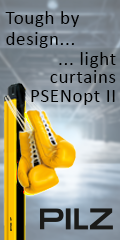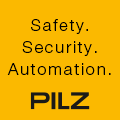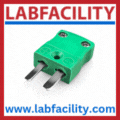
Posted to News on 15th Oct 2008, 22:10
3D data optimises robot applications in the food industry
3D machine vision based on Scorpion Vision software is being used to measure food products and optimise pick-and-place motions.
Scorpion Vision Ltd has been involved in a number of projects in the food processing and packaging industry in which the use of 3D vision is paying dividends for end users. For example, the Scorpion Vision software builds 3D models of food products - such as cakes, bacon or sausages - in real time, meaning that pick-and-place or other downstream processes can be optimised in terms of throughput and quality.
In one application the Scorpion Vision software is used to create 3D co-ordinates of the top of the cake to within an accuracy of 0.1mm. This data is then used by a robot to apply decorative icing. As far as Scorpion Vision Ltd is aware, this combination of 3D vision and robotic icing has not been implemented elsewhere before.
Another popular use for 3D vision is in the packaging of meat products, including bacon and sausages. In this type of application, knowing the height and 2D profile of the product enables the picking system to operate more efficiently.
Enabling technologies
There are several reasons why 3D machine vision has now become mainstream, not only in the food industry but also in manufacturing environments including robotic picking of components positioned randomly in tote bins or on conveyors. Today's powerful software-based machine vision systems are fully capable of transforming 2D images into 3D calibrations. This is highly processor-intensive and so this has been enabled by the availability of relatively low-cost multi-core processors.
Furthermore, the fact that Windows XP takes care of image acquisition and simultaneous processing of multiple tasks or threads at OS level, all without the need for any extra hardware such as frame grabbers or additional processing, means that the application software is left to get on with the job of 3D modelling.
A key feature of Scorpion Vision Software is the ease with which 3D models can be created and used. A 3D model requires a set of 3D points that can be used for finding 3D planes and geometrical structures such as boxes and cylinders.
Simple implementation
Building the vision system is a matter of using the standard non-programming tools in the Scorpion tool set. Once complete, Scorpion Vision then does all the work and outputs 3D numerical data to the associated control system. Interfacing to Scorpion is said to be easy and can be via Ethernet, RS232, serial bus or third-party modules. Scorpion Vision has been integrated with most robot systems including Fanuc, Kuka, ABB, Denso, Bosch, Motoman, Kawasaki and many more.
For system integrators, 3D vision offers several opportunities. Primarily it provides a 'unique selling point' that helps to win more business; this commercial and technical advantage over competitors should not be underestimated. Once the business has been won, however, 3D vision offers the ability to build complex vision systems quickly and cheaply.
To find out more about 3D vision, go to www.scorpionvision.co.uk.





